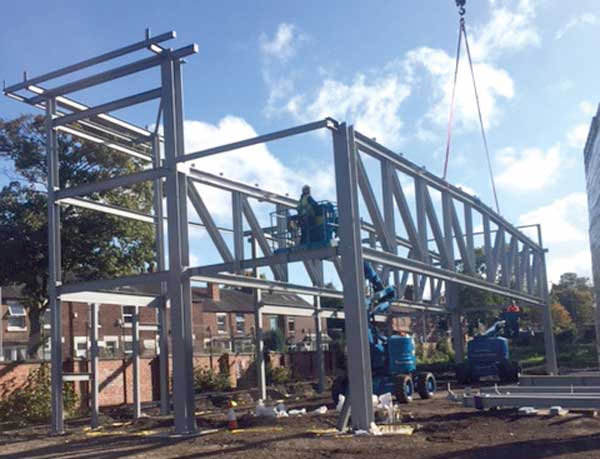News
President’s Column: May 2018
 I’ve learnt over the years that my view of the world isn’t shared by everyone else. And when we think about design, that is certainly the case.
I’ve learnt over the years that my view of the world isn’t shared by everyone else. And when we think about design, that is certainly the case.
From an architect’s perspective, design can be seen as a bridge – one between a client’s vision and the actual form of the structure. When I have met with architects or heard them speak, they have often referred to design as both an art and a science. Then when the design is passed onto the engineer, mathematics, science and modelling dominate, and practical design issues such as buildability, cost and safety come to the fore.
Like engineers, steelwork contractors use modelling to ensure the safety, buildability and cost-effectiveness of the steel structure. But for us, design provides much more than this.
First and foremost, a good design process means a technically correct and complete model is handed over to the steelwork contractor. But all too often, information is missing, unclear and sometimes just plain wrong. So with the clock already ticking on the programme, the steelwork contractor spends time chasing up information or querying design issues, and is often put under pressure to start processing the steelwork before the design is finalised. Naturally, this can lead to costly rework and delays later on.
Why does this happen?
One reason is the 2008 recession, which hollowed out many mid-career engineers; those who would have provided support today for their younger, less experienced colleagues. This gap is now being filled with IStructE and others developing a range of training programmes for their members over the last few years.
The second reason is procurement. A good design process is reliant on an effective procurement process, and this remains a major issue in the construction sector. The design cannot be completed when key follow-on trades such as M&E and cladding contractors have not yet been contracted, so the consultant and steelwork contractor are forced to make assumptions that often need to be changed later on.
Willingness to pay for a proper design sometimes comes into it as well – who can blame consultants for only doing what they’re contracted to do?
BIM was touted as the answer to the problem of good and complete design. As we all know, steelwork contractors have enthusiastically adopted Level 2 BIM. However, to be fully effective, BIM as a process requires engagement of the various parts of the supply chain at the right time in the procurement process.
If the government is to improve efficiency and productivity, as it says it wants, it could start by looking at early engagement with the supply chain and finalisation of the design to drive a more effective design process.
Tim Outteridge
BCSA President & Sales Director Cleveland Bridge












